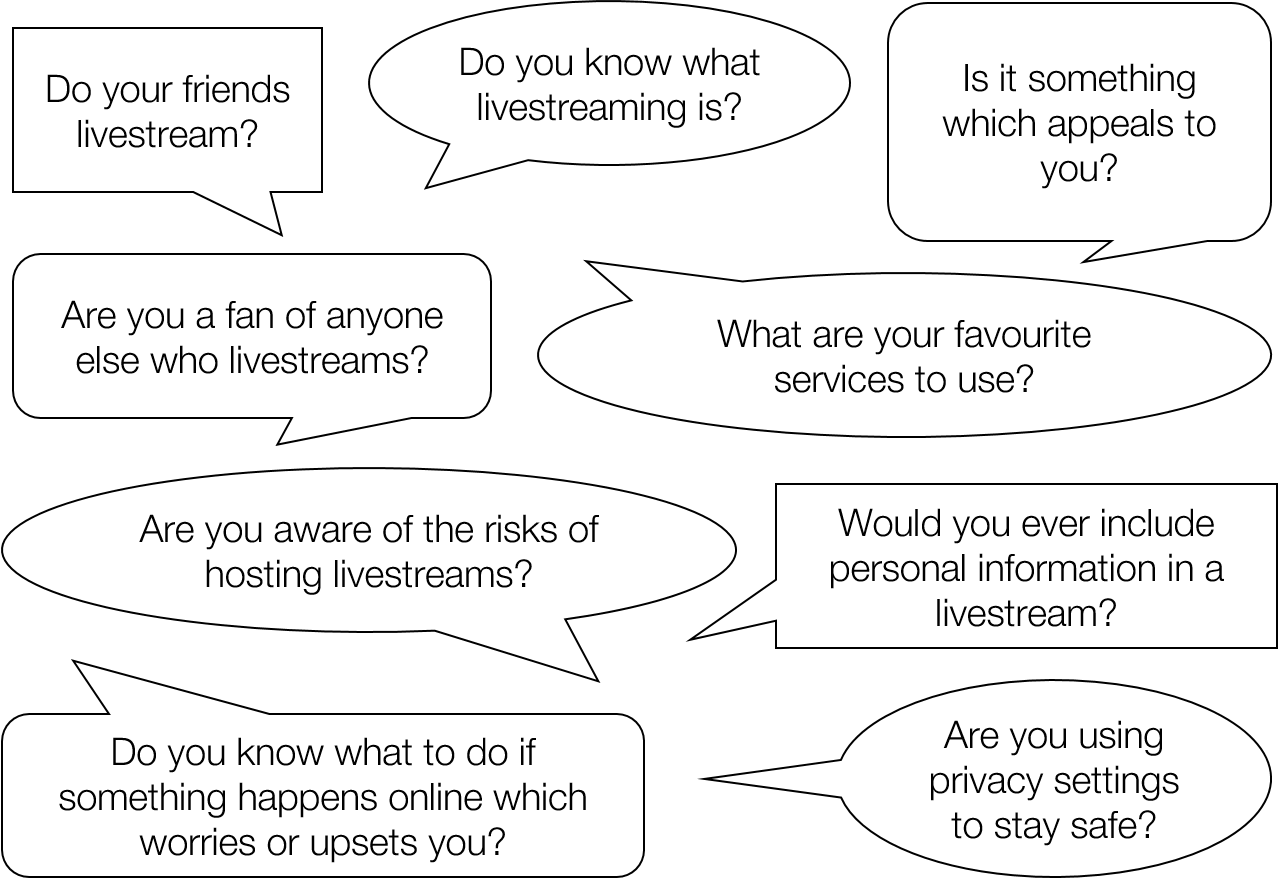Livestream
[verb]
To transmit or receive live video and audio coverage of an event or person over the Internet.
What is livestreaming?
Livestreaming is becoming a very popular way for people to broadcast themselves on apps and sites such as Snapchat, TikTok, Twitch and Instagram.
People use these services to broadcast live video footage to others, such as their friends, a certain group of people or the general public. On some services this footage is also recorded and available to view after the livestream has ended.
Livestreaming is also used as a means to communicate to the world what is happening at a specific moment in time. For example, livestreaming can be used to document breaking news stories. On many occasions this footage is used by some of the large media channels in order to document a breaking story.
How can I support my child when they’re watching or hosting livestreams?
Regardless of how your child is engaging with livestreaming, there are lots of things you can do to support them in staying safe.
- Discussion and involvement with your child’s online life is key. Find out how they are engaging with livestreaming – always start with the positives before talking about the risks involved. Why not use one of the conversation starters below?

It may also be useful to talk generally about staying safe online using the SMART rules. The NSPCC’s Pants Rule is another useful tool which helps younger children understand what parts of the body should stay private – make sure they know this applies online too. - Find out more about the services your child is using. Get them to give you a tour of the site or app and talk you through how it works. Use it together if you can, or set up your own account to familiarise yourself with how it works. You can also find more information on specific livestreaming services from NetAware (a collaboration between O2 and the NSPCC) or Common Sense Media. If you’re really stuck then try searching the name of the service and ‘livestreaming’ on a search engine.
- Consider using a family agreement to establish your expectations and ensure everyone is on the same page.
It may be that you decide your child is too young to be watching or hosting livestreams – make sure they know why this is and then together agree when you can review this decision.
If your child is already a fan of livestreaming you might want to set guidelines on when and where they can do it. You could agree that they can livestream only from a set room in the house, such as the living room and always with the door open. You might agree that an adult must always be present or forewarn them that you will check in at regular intervals throughout their stream. - Make sure your child knows they can and should come to you if anything is worrying or upsetting them online. Ensure your child knows that you are there to support them and to help them stay safe.
Tell your child that if he or she is ever asked to say or do something online they don’t feel comfortable with, they can always say no, end the chat or broadcast, and talk in confidence with you or another trusted adult. Remind them that it is never too late to tell you about something which has happened online. - There are lots of tools to help you manage the devices used by your family. For example, knowing how to activate and use parental controls can help protect your child from seeing inappropriate content online. For advice and guidance on how to make use of parental controls and other safety features on devices, check out the UKSIC’s free Parents’ Guide to Technology.
If your child is using livestreaming services, it’s also worth considering the privacy settings available to them, as well as how to make a report if they see or hear anything offensive or abusive.
 As part of our work in the UK Safer Internet Centre
As part of our work in the UK Safer Internet Centre
